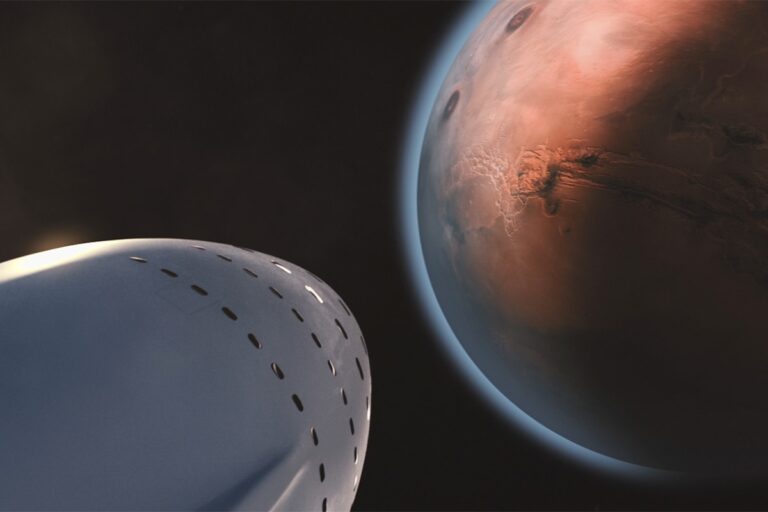It’s no secret that NASA has been working hard to bring humans to Mars. How will they get there, what will they wear, and how will they live? The National Aeronautics and Space Administration (NASA) is pursuing some of its most ambitious programs yet to answer these issues.
NASA is developing significant advances that will be required for a successful voyage to Mars through study, experimentation, and collaboration with private industry partners.
Table of Contents
6 technologies NASA is developing for sending people to Mars
From strong propulsion systems to high-tech space suits, seven NASA technologies will allow humanity to live on Mars.
1. Powerful propulsion systems
The first step for going to Mars is getting off Earth’s atmosphere & orbit. NASA’s newly developed powerful propulsion systems are capable of carrying spacecraft and cargo beyond the Earth’s orbit efficiently. The engines of these systems provide greater thrust for less fuel. As a result, the spacecraft can travel more distance with the consumption of less fuel. This makes the Mars Mission budget-friendly, efficient, and feasible.
2. High-Tech Martian spacesuits
For Mars exploration, astronauts need specialized space suits which will help them survive on Mars. Thus, NASA has developed advanced high-tech Martian spacesuits using digital analytic components for manufacturing in the development of the final spacesuit.
These Martian suits are designed to withstand high-speed winds filled with abrasive Mars dust, radiation such as cosmic rays, and low temperatures down to −130 °C (−202 °F; 143 K). Not just this, they can also withstand exposure to ultraviolet light. Besides resisting extreme conditions, these spacesuits are designed to provide mobility and flexibility. Moreover, they are equipped with sophisticated monitoring systems to track the crew’s health and vital signs.
Read also: Space exploration, trends and forecasts for the near future
3. Inflatable heat shield
NASA has created an inflatable heat shield technology called the Low-Earth Orbit Flight Test of an Inflatable Decelerator to help astronauts land safely on Mars. (LOFTID). Because this technology is lightweight and flexible, it is easier to transport and deploy in space. In November 2022, LOFTID was successfully tested, confirming its ability to resist the extreme circumstances of re-entry into Earth’s atmosphere.
This flexible layer of protection shields the spacecraft from severe temperatures, which are generally experienced during re-entry. This enables the spacecraft to slow down without burning up in the atmosphere, resulting in a safe and controlled landing on Mars’ surface. The inflatable heat shield is still being tested and developed, but preliminary findings are promising.
4. Uninterrupted power
Once stationed on Mars, astronauts will need to be able to power their station for extended periods of time. For its Mars missions, NASA has developed two power systems: the Multi-Mission Radioisotope Thermoelectric Generator (MMRTG) and the Fission Surface Power (FSP) or Kilopower.
The MMRTG is a nuclear battery that generates around 110 watts of electricity by utilizing the heat generated by the natural radioactive decay of plutonium-238. The FSP or Kilopower, on the other hand, generates electricity using nuclear fission and has a power range of 100W to 1kW. NASA has also been investigating nuclear thermal propulsion as a means of accelerating human travel to Mars.
5. Martian lab & home
To keep their mission safe, NASA is constructing a fully-equipped laboratory and living space for the astronauts to use while they’re stationed on the red planet. This lab will include research and monitoring equipment to track the Martian environment, as well as all the creature comforts of home, such as sleeping quarters, recreation areas, and more.
6. Laser communications
NASA has created a laser communications technique dubbed the Laser Communications Relay Demonstration (LCRD) for its Mars programs in order to improve contact with Earth. The LCRD is a bidirectional optical communications system that can transport data at rates of up to 1.2 gigabits per second.
In December 2021, the system was launched into orbit to test its capabilities. The LCRD should improve communication between Earth and Mars by enabling faster and more efficient data transfer. This will allow astronauts to communicate with Earth while on Mars and discuss their study findings in real-time.
6. Autonomous vehicles
Finally, to explore the Martian surface without risking the lives of astronauts, NASA is developing autonomous vehicles that can traverse the planet’s rugged terrain. These self-driving rovers will be equipped with sophisticated mapping and navigation systems, enabling them to explore potential landing sites, collect scientific samples, and more. The best part is all of this will be possible without any human input.
With these technologies onboard, the Red Planet as our second home is not far away. NASA is striving endlessly to make the Mars Colonisation mission possible, safe, and efficient. Let’s prepare ourselves to witness the change these technologies bring.
Read also: International Space Station, what are its current missions in the space












